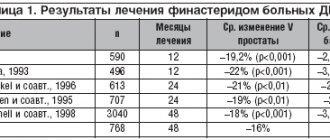Recommended products and dishes of diet table No. 9 for bronchial asthma
Bread: whole grain, bran, diabetic varieties. Soups: any soups with a weak meat broth or a weak poultry broth. Meat dishes: lean beef, veal, as well as turkey, rabbit, boiled or baked in pieces; chicken - with caution, in limited quantities. Fish dishes: low-fat fish, boiled in pieces. Side dishes: any vegetables raw, boiled, baked, stewed are recommended; limit potatoes; cereals in the form of porridges in moderation. Dairy products: with caution if you are not allergic to milk; cottage cheese (fresh or in dishes), fermented milk drinks, cheese. Eggs: limited unless allergic. Snacks: aspic, vegetable salads. Sweet dishes: fresh unsweetened fruits and berries; sugar is excluded, confectionery products are very limited. Drinks: tea with and without milk, rose hip decoction, unsweetened juices, mineral water. Fats: fresh vegetable oil, butter.
Mikhail Evgenievich Mozzhelin , medical representative and scientific expert of ED Medicine in Russia, candidate of medical sciences, member of the board, chief expert on colloid forms of dietary supplements of the Society of Natural Medicine, member of the Russian Society of Herbalists Bronchial asthma is a lesion of the upper respiratory tract, which is based on a narrowing of the bronchi. In asthma, there is excessive reactivity, a pronounced inflammatory process, and increased mucus production, which leads to respiratory dysfunction and attacks of suffocation. Bronchial asthma is a chronic disease that lasts a long time and, accordingly, is most effectively corrected by taking special medications along with lifestyle correction.
Asthma is often (though not always) associated with exposure to allergens (Morris, 2012).
The prevalence of bronchial asthma depends on many factors, including natural and climatic ones. It is known that this is a disease of industrialized countries.
The disease affects people of all ages, but most often begins in childhood. In adults, the incidence is approximately 1%.
The average prevalence of asthma in adults is approximately 1%. Both in our country and abroad there is an increase in incidence. There are a number of reasons for this: an increase in chronic lung diseases, an increase in allergenicity of the population due to industrialization, the expansion of the use of agricultural, household, industrial chemicals, industry and everyday life, environmental pollution, the active use of vaccines, serums, antibiotics, etc.
Development mechanisms
Bronchial spasm
In asthma, the bronchi exhibit increased sensitivity to inflammatory activators (immunoglobulins, antibodies, histamine), which leads to spasm and narrowing of the bronchi (Miller, 2001).
Inflammatory phenomena in the respiratory tract
In asthma, the inflammatory reaction in the bronchi is excessive and pronounced, sometimes even to substances that are harmless under normal conditions. There is swelling in the bronchi and increased mucus production, which leads to narrowing of the airways (Lemanske, 2010). As a result, characteristic attacks of suffocation develop.
Risk factors
Allergies and hypersensitivity
An allergy is an excessive immune reaction and often underlies asthma. Seemingly neutral substances in the external environment can act as allergens. Recently, food allergies and intolerances have become increasingly important (Young, 2011; Wang, 2011).
Tobacco smoke
Smokers have a higher risk of developing asthma. Asthmatics who quit smoking experience a reduction in the severity and frequency of asthma attacks (Stapleton, 2011).
Occupational hazards
Occupations in which the risk of asthma is higher: - woodworking - detergent production - some medical specialties - food industry (PubMed Health, 2011; Bakerly, 2008; Vandenplas, 2011).
Medicines
Some medications, including non-steroidal anti-inflammatory drugs (NSAIDs), antihypertensive drugs (ACE inhibitors), can trigger the development of asthma (Sanfiorenzo, 2011).
Chronic diseases
Chronic rhinitis, sinusitis/rhinosinusitis, gastroesophageal reflux disease (GERD), chronic obstructive pulmonary disease (COPD), hormonal imbalance, obesity, depression and nervousness provoke the development of asthma. There is evidence that stress worsens asthma (Yonas, 2012).
Basic recommendations for bronchial asthma
Allergist consultation
People with asthma should undergo allergen testing and limit exposure to identified allergens as much as possible.
Exercises
Preliminary evidence suggests that yoga and breathing exercises improve asthma (Vempati, 2009; Mekonnen, 2010). The main recommendation for bronchial asthma is their regularity.
Treatment of underlying illness
A recommendation for bronchial asthma is treatment of the underlying inflammatory disease (bronchopulmonary or ENT, other diseases that provoke asthma). For example, treating gastroesophageal reflux disease (GERD) reduces the number of exacerbations and improves the quality of life of an asthmatic (Littner, 2005).
Resisting stress
Adequate rest and resistance to stress are also recommended for bronchial asthma. With frequent asthma attacks, patients develop increased anxiety and depression, in turn, anxiety and stress aggravate asthma (Wright, 2011).
Nutrition and diet for bronchial asthma. What is used and prescribed for bronchial asthma?
It has been observed that people (regardless of health status) who do not eat enough fruits and vegetables are more susceptible to lung disease. A study found that patients who ate fewer fruits and vegetables in their asthma diet had more asthma attacks (Gilliland, 2003). Therefore, for bronchial asthma, the recommendation is a balanced diet with sufficient amounts.
In addition, it has been found that a healthy, antioxidant-rich diet for asthma improves the course of the disease. For example, three studies found that children who followed a Mediterranean diet (predominantly plant-based foods such as fruits, vegetables, whole grains, legumes and nuts, seafood, and limited consumption of red meat) had fewer bronchopulmonary diseases and were less likely to be diagnosed with asthma. and allergic rhinitis (Chatzi, 2009; Arvaniti, 2011; Grigoropoulou, 2011). Another study found that the severity of the disease also decreased in adults when switching to a Mediterranean diet for asthma (Barros, 2008).
Obesity is associated with asthma (Boulet, 2011), and in overweight asthmatics, reducing it leads to improved respiratory function (Maniscalco, 2008). Thus, the recommendation for bronchial asthma is the correction of excess weight.
Several population studies have shown that apple eaters are less likely to develop asthma. Apparently, polyphenols and antioxidants have a protective effect on the bronchopulmonary system (Boyer, 2004; Hyson, 2011). Add apples to your diet for asthma.
Nutrients that are used for bronchial asthma
Vitamin D
Vitamin D plays an important role in regulating the immune system and the development of the inflammatory response. Data from laboratory studies on animal models of asthma have shown that vitamin D reduces excessive bronchial response to allergens and helps reduce the inflammatory response (Taher, 2008; Damera, 2009).
Studies conducted among patients have shown that with low levels of vitamin D in the blood, the disease is more severe, attacks occur more often, compared to patients who use this vitamin for bronchial asthma (Chinellato, 2011; Sutherland, 2010; Searing, 2010).
Observational studies have shown that when vitamin D is prescribed to pregnant women for asthma, children are born with a lower risk of bronchopulmonary disease and asthma compared to women with vitamin D deficiency (Devereux, 2007; Erkkola, 2009; Miyake, 2010a).
A study of children with mild to moderate asthma found that low vitamin D levels were associated with an increased risk of worsening asthma and an increased rate of asthma exacerbations over the next 4 years (Brehm, 2010).
Another study found that children who had low vitamin D levels at age 6 had a higher risk of developing asthma at age 14 compared to children with high vitamin D levels (Hollams, 2011).
In order to definitively establish whether there is an effect of vitamin D on bronchial asthma, two relevant studies are currently being conducted at the National Institutes of Health (clinicaltrials.gov). One clinical trial in adolescents and adults with asthma is testing whether taking vitamin D reduces the risk of infectious diseases progressing to asthma (NCT00978315). A second study in adults examines whether vitamin D supplementation helps prevent attacks when given for asthma compared with placebo (NCT01248065).
Antioxidants are used for bronchial asthma
A number of studies have shown that if antioxidants, such as vitamins C, E, flavonoids and selenium, are used for bronchial asthma, the degree of bronchospasm is reduced.
Vitamin E
Vitamin E has antioxidant and anti-inflammatory properties, suppresses the production of inflammatory activators (cytokines, inhibits the expression of the IL-4 gene) (Li-Weber, 2002).
Research has shown that when vitamin E is prescribed for asthma, there is a reduction in symptoms such as wheezing, coughing and difficulty breathing (Litonjua, 2012).
Some studies show that a lack of vitamin E in the mother is associated with an increased risk of lung diseases in newborns and children (Miyake, 2010b; Litonjua, 2006), and an increased risk of developing asthma in children under 5 years of age (Devereux, 2006).
Vitamin C
Research into the nutritional patterns of the population, nutrition for bronchial asthma and experimental work indicate a connection between low levels of vitamin C and the risk of developing the disease.
In animal experiments, it was found that the use of vitamin C for allergies reduces irritation and increased sensitivity of the respiratory tract, reduces the number of inflammatory cells in the bronchi (Jeong, 2010).
One study demonstrated that children with asthma reported relief from increased intake of omega-3 fatty acids, vitamin C, and zinc. The nutrients have a greater effect when all three are used simultaneously for asthma than when used individually (Biltagi, 2009).
Another study of 8 patients showed that when asthma was treated with 1500 mg of vitamin C per day for two weeks, the disease improved significantly compared to patients receiving a placebo (Tecklenburg, 2007).
Polyunsaturated fatty acids are used for bronchial asthma
There are two main groups of polyunsaturated fatty acids (PUFAs): omega-3 and omega-6. Sources of omega-3 are fish carcass fat, flax seed oil. Omega-6 acids are found in vegetable oils (sunflower, corn).
The modern human diet is deficient in anti-inflammatory omega-3 fatty acids and excess of omega-6 acids, which provoke and maintain an inflammatory response, which creates favorable conditions for the development of asthma (Black, 1997).
Experimental studies show that high fish consumption may reduce the risk of asthma (Laerum, 2007; Miyamoto, 2007), and those who eat vegetable oils and margarine have a higher risk of the disease (Nagel, 2005).
A number of studies suggest that an asthma diet high in omega-3 fatty acids reduces the severity of the disease (Mickleborough, 2006; Schubert, 2009).
Minerals
Selenium in the diet for bronchial asthma
Studies have shown that asthma is associated with selenium deficiency (Qujeq, 2003; Allam, 2004; Rubin, 2004). There have been several studies on the effects of selenium when prescribed for asthma.
One study showed that taking 200 mcg of selenium per day could reduce the dosage of corticosteroid hormones (if necessary) (Gazdik, 2002).
Another study found significant clinical improvement with even 100 mcg of selenium per day for asthma (Allam, 2004).
A 2007 study of 26 patients demonstrated that when asthma was treated with 200 mcg of selenium per day for 16 weeks, lung function and quality of life improved (Voicekovska, 2007).
Another study found that dietary selenium supplementation for asthma improved quality of life, but no changes in lung function were noted (Shaheen, 2007).
Zinc in diet for bronchial asthma
Two studies have shown that higher zinc intake by women during pregnancy may protect the child from lung disease and asthma (Litonjua, 2006; Devereux, 2006).
Another study found that people with episodes of wheezing, asthma, and severe lung disease had low levels of zinc in their sputum (Jayaram, 2011).
A study of laboratory animals (mice prone to allergies) showed that the addition of zinc protects the respiratory tract from the irritating effects of allergens (reduces the release of inflammatory cytokines, immunoglobulins E), and reduces excessive irritability of the bronchi (Morgan, 2011).
Magnesium
Magnesium has been found to relieve spasms and help relax the muscles of the bronchi (Gourgoulianis, 2001).
In patients with asthma of varying severity (from mild to moderate), consuming 340 mg of magnesium daily for 6.5 months significantly decreased bronchial reactivity, improved lung function, asthma, and quality of life compared with the placebo group (Kazaks, 2010 ).
Two other studies in children with mild to moderate asthma showed similar beneficial effects of magnesium supplementation on asthma (Bede, 2003; Gontijo-Amaral, 2007).
Magnesium is prescribed not only in the form of supplements, but also intravenously for asthma. A recent review of 16 clinical trials confirmed the benefits and safety of intravenous magnesium sulfate for severe exacerbations (Song, 2012).
Curcumin
Curcumin, the yellow pigment in turmeric (found in high concentrations in curry sauce), has a powerful anti-inflammatory effect (it inhibits a certain enzyme (called nuclear factor kappa B) involved in the production of inflammatory activators (cytokines) (Oh, 2011).
In an animal experiment, a study of this mechanism in an asthma model showed that curcumin thus reduces airway hypersensitivity, inflammation, and the accumulation of inflammatory cells in the lungs (Oh, 2011).
Lycopene
Lycopene is a red pigment found in tomatoes and some fruits. In patients with asthma, adding lycopene to the diet prevents the development of an attack during physical activity in more than half of the patients (Neuman, 2000).
Animal studies have established numerous beneficial effects of lycopene on the lungs in asthma: it reduces the susceptibility to allergies and the tendency to bronchial reactions, reduces inflammation and edema (Hazlewood, 2011; Lee, 2008).
Flavonoids
Flavonoids, found in fruits, vegetables, red wine, and tea, have antioxidant and anti-inflammatory properties. Their consumption has been found to improve lung function (Garcia, 2005). Some of them have been studied in asthma.
Quercetin
It has been established that regions where they consume more flavonoids have a lower incidence of asthma: - tea and onions (due to quercetin); - oranges and grapefruits (the main flavonoid naringenin); - oranges and lemons (contain the protective flavonoid hesperidin) (Knekt, 2002).
One study found that even a single dose of quercetin leads to bronchi relaxation and dilation (Joskova, 2011).
Another study confirmed that quercetin reduces mucus production and has an anti-inflammatory effect (reducing the production of inflammatory cytokines) (Rogerio, 2010).
Another animal study found that quercetin suppresses the development of an asthmatic reaction when administered with a special provoking substance (Park, 2009).
Ginkgo biloba
The plant contains flavonoids that relieve asthma (Mahmoud, 2000; Li, 1997; Tang, 2007).
In one study, ginkgo biloba extract was used for 2 weeks in patients with asthma who were prescribed hormonal medications. Patients given ginkgo biloba were found to have significantly fewer inflammatory cells in the sputum of patients given ginkgo biloba compared to those given hormonal drugs alone or a dummy placebo alone, suggesting that the plant reduces airway inflammation in asthma (Tang, 2007).
In an animal study, ginkgo was found to reduce the accumulation of inflammatory cells in lung tissue and reduce mucus production in the airways (Chu, 2011).
Colloidal phytoformulas ED Medicine for bronchial asthma
ED Medicine colloidal phytoformulas contain a rich set of useful and scientifically proven components used in bronchial asthma. In addition: - produced in the form of a colloidal solution of high bioavailability (up to 98%) - produced in a factory according to the cGMP pharmacopoeial standard - there are no potentially dangerous ingredients (allergens, GMOs, NANO) - multicomponent preparations, that is, one product contains the entire complex of scientifically based and beneficial nutrients, vitamins and minerals
Colloidal phytoformula Antioxidant (more >>)
Contains a rich set of nutrients, vitamins and minerals that are used for asthma and described above, in the form of a colloidal solution of the highest bioavailability (up to 98%): - strictly standardized ginkgo biloba extract - quercetin - vitamin C - vitamin E - selenium - zinc
Special colloidal phytoformula BronchoLine (more >>)
Contains a complex of medicinal plants and nutrients that actively improve the function of external respiration, help reduce bronchospasm and inflammation and, thus, alleviate the course of bronchial asthma ( more >> ).
Excluded foods and dishes of diet table No. 9 for bronchial asthma
From the diet you should exclude fried foods, flour products made from premium wheat flour, baked goods, chocolate, cocoa, coffee, jam, honey, confectionery, some fruits and berries (bananas, grapes, raisins, figs, citrus fruits, strawberries, raspberries, dates), as well as juices from them, fatty meat, poultry, lard, liver, cooking fats, strong meat, fish and mushroom broths, salted fish, smoked meats, cereals, pickles, canned food, marinades, spicy snacks, seasonings, sauces, spices and spices. Sweet and alcoholic drinks are also excluded.
Material and methods
The search for published data was carried out in the electronic databases Medline (PubMed) and eLibrary. To search for English-language articles, the keywords “asthma”, “diet”, “obesity” were used; to search for Russian-language articles, the keywords “bronchial asthma”, “diet”, “obesity” were used.
The eligibility of English-language original sources was assessed in several stages: titles, abstracts and full-text articles were reviewed. In addition, an additional search of references from documents was used.
Publications of individual observations, animal studies, and articles that reported preliminary research results or duplicated research results were excluded from the analysis.
Sample diet menu No. 9 for bronchial asthma
First breakfast: buckwheat porridge, cottage cheese, tea with milk. Second breakfast: apple pudding. Lunch: borscht, pancakes with meat, vegetable stew, rosehip broth. Afternoon snack: fruit jelly. Dinner: boiled cauliflower, meatballs in sauce, apple compote. At night: yogurt.
Sources:
- Order of the Ministry of Health of the Russian Federation No. 330 “On measures to improve clinical nutrition in medical institutions of the Russian Federation” dated 05.08.2003
Introduction
Bronchial asthma (BA) is a chronic inflammatory disease characterized by increased lower airway reactivity, usually leading to reversible airflow limitation [1].
Worldwide, there is an increase in the prevalence of asthma, which is currently registered, according to some estimates, in 300 million people, and by 2025 the number of patients with asthma is expected to increase to 100 million [2]. In the Russian Federation, there is also a tendency to increase the prevalence of asthma [3]. Despite the fact that genetic and environmental factors play a major role in the development of AD, such a rapid increase in the prevalence of the disease cannot be explained by the action of the above factors alone [4]. Studies show a close connection between the increasing prevalence of asthma and environmental changes (urbanization), lifestyle and the development of obesity [5, 6]. Excess caloric intake, nutrient-poor diets, and low levels of physical activity are associated with worse asthma control, decreased quality of life (QoL), and increased health care utilization [7–11]. A key question for clinicians is whether dietary modification can provide benefits to patients with asthma in routine clinical practice and help prevent exacerbations.
The purpose of this work is to summarize the available literature data on the effect of various foods on the course of asthma.
Dietary table recipes No. 9 for bronchial asthma
- buckwheat
- carrot zrazy
- apple pudding
- fish cutlets
- carrot and cabbage salad
- vegetarian okroshka
- baked fish
- stewed zucchini
- cheesecakes with berries
- cucumber salad
- jelly
- vegetable cabbage rolls (without rice)
- borsch
- pancakes with boiled meat
- vegetable stew
- fruit jelly
- meatballs stewed in sauce
- apple compote
Photos used in this material belong to shutterstock.com
Varieties
Elimination diet
In the atonic form of the disease with identified food allergens, an elimination diet is prescribed, in which only foods that reliably cause attacks of bronchial asthma are excluded, and not all foods with “high antigenic potency.” Foods that are known to cause allergic reactions are excluded from the diet. At the same time, not only the products themselves are excluded, but also dishes containing them. For example, if you are intolerant to chicken eggs, exclude mayonnaise, creams, baked goods, casseroles and all dishes that contain eggs in the recipe. Otherwise, nutrition should be physiologically complete, with a stronger limitation of easily digestible carbohydrates.
It is recommended to replace sugar with saccharin , xylitol , and sweetener . Significantly reduce table salt and the consumption of salty foods; it is advisable to increase the content of vegetable oils in the diet. Dishes are prepared stewed, boiled, baked, but not fried. In the atonic form, regular bowel movements are extremely important.
In case of constipation, the diet includes foods and dishes that have a laxative effect. The diet is enriched with foods containing calcium (fermented milk products, cottage cheese), which has an antiallergic effect. When excluding any products from the diet, you should select appropriate equivalent substitutes. For example, replace whole cow's milk with soy milk, fish with legumes and cottage cheese.
Fasting and dietary therapy
A type of diet therapy includes fasting-dietary therapy, prescribed for severe forms of the disease (a combination of drug and polyvalent food allergies, bronchial asthma and obesity , psoriasis and eczema ). It is contraindicated during pregnancy and lactation, active tuberculosis , dysfunction of internal organs, children and the elderly.
Fasting-dietary therapy for asthmatics involves hospitalization of the patient; it is strictly prohibited to carry it out at home and without a doctor’s prescription. However, as an alternative, short courses of fasting can be recommended, which are almost as effective, but less dangerous in terms of associated complications. The duration of such courses is 3–7 days.







